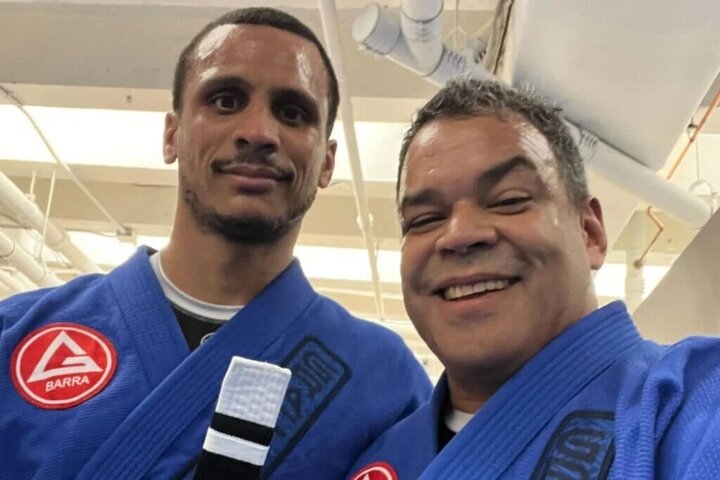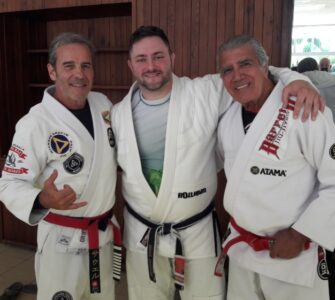In recent years, Brazilian Jiu-Jitsu (BJJ) has become increasingly popular among American athletes as a cross-training tool. This martial art and combat sport offers a unique set of benefits that appeal to athletes from various disciplines. From enhanced physical conditioning and improved mental toughness to practical self-defense skills, BJJ has captured the attention of American athletes seeking to elevate their performance. BJJ provides a full-body workout that improves cardiovascular endurance, muscular strength, flexibility and agility.
The rigorous BJJ training sessions (involving grappling, ground fighting and executing techniques) build functional strength and enhance physical conditioning. BJJ bouts are also captivating for bettors, with fighters showcasing their technical skills and strategic prowess. As competitors battle for advantageous positions and submission attempts, the back-and-forth nature of matches creates a sense of anticipation and excitement for spectators and bettors alike. In 2023, discerning fans typically consult platforms such as Merkurxtip to identify different eSports, live games, and other entertainment options that cater to their interest in BJJ. Through informative perspectives and practical advice, this article aims to shed light on the advantages that BJJ offers to athletes looking to enhance their skills, performance, and overall athletic journey.
The versatility of BJJ as a complementary training method
One of the key reasons American athletes are turning to BJJ as a cross-training tool is its versatility. BJJ’s focus on grappling, ground fighting, and leverage-based techniques offers a unique skill set that complements a wide range of sports.
If you are a wrestler, mixed martial artist, basketball player, or football player, BJJ provides valuable skills applicable to various athletic endeavors. The ability to control opponents, manipulate body positions, and execute submissions can enhance the overall performance and tactical understanding of athletes in their primary sport.
Mental resilience and problem-solving skills
BJJ demands mental resilience and cultivates problem-solving skills in athletes. The strategic nature of BJJ forces practitioners to analyze situations, anticipate the moves of opponents and make quick decisions. This mental agility and adaptability goes beyond the mat, enhancing the ability of athletes to think under pressure, strategize effectively, and make split-second choices in their respective sports.
Moreover, the problem-solving aspect of BJJ teaches athletes to remain calm and focused in high-pressure situations, a skill that can positively impact the decision-making process during critical moments in competitions.
Physical conditioning and body awareness
BJJ training provides a rigorous workout that enhances physical conditioning in athletes. The grappling, takedowns, and ground fighting involved in BJJ require strength, endurance, flexibility, and cardiovascular fitness. Regular practice develops these attributes, resulting in improved overall athleticism and body awareness.
The controlled movements, transitions, and postures in BJJ engage multiple muscle groups, improve functional strength, and enhance muscular endurance. Additionally, an emphasis on body awareness and correct alignment assists athletes to develop a greater sense of proprioception, which contributes to better coordination, balance, and spatial awareness in their primary sport.
Practical self-defense skills
The self-defense aspect of BJJ is a significant benefit for many athletes. BJJ focuses on techniques that enable smaller individuals to control and subdue larger opponents, making it a valuable skill set for personal safety. By learning effective self-defense maneuvers, American athletes gain confidence and a sense of empowerment on and off the field.
BJJ teaches athletes how to leverage their bodies, anticipate the movements of opponents, and neutralize threats in close-quarters situations. These self-defense skills can enhance the personal security of athletes and provide them with a greater sense of control in potentially threatening scenarios.
Injury prevention and rehabilitation
BJJ promotes correct movement mechanics and controlled techniques, reducing the risk of injuries in athletes. Unlike high-impact sports that put significant strain on joints and tendons, BJJ offers a lower-risk training option that emphasizes technique and leverage.
The controlled nature of BJJ training minimizes the likelihood of traumatic injuries, and the focus on joint locks and chokes allows practitioners to train at lower intensities. Additionally, BJJ can serve as a low-impact training option during rehabilitation from injuries, allowing athletes to maintain fitness levels while minimizing strain on affected areas.
Building camaraderie and creating a supportive community
The BJJ community in the United States is known for its inclusivity and supportive environment. Athletes who venture into BJJ training often find themselves immersed in a network of like-minded individuals who share a passion for martial arts and self-improvement. The camaraderie and sense of community contribute to a positive training experience and foster personal growth.
BJJ academies and training centers typically cultivate an environment of mutual respect, collaboration, and encouragement. This community aspect can be particularly beneficial for athletes seeking additional support, motivation, and a sense of belonging outside of their primary sport.
Expert advice: Incorporating BJJ into a training regimen
For athletes considering incorporating BJJ into their training regimen, it is essential to approach it with a thoughtful and gradual approach. Seek reputable BJJ schools or academies with experienced instructors who can guide you through proper technique and progression. It is recommended to start with rudimentary classes and gradually progress to more advanced levels as your skills and understanding develop.
Additionally, communicate with your primary coach or trainers to integrate BJJ training in a way that complements the sport, ensuring a balanced and effective training routine. Work closely with BJJ instructors and your primary coach to tailor your cross-training approach to your specific needs and goals. This collaborative effort will assist you to maximize the benefits of BJJ while minimizing the risk of overtraining or conflicting methodologies.
Concluding remarks
In modern times, as American athletes strive to gain a competitive edge and explore new training methodologies, Brazilian Jiu-Jitsu has emerged as a compelling cross-training tool that teaches us valuable lessons about life. With its versatility, mental and physical benefits, practical self-defense skills, injury prevention aspects, and the sense of community it fosters, BJJ offers a comprehensive package that resonates with athletes from various disciplines.
By embracing BJJ as a cross-training tool, American athletes can enhance their skills, boost their performance, and experience personal growth both on and off the field. With careful integration and expert guidance, BJJ has the potential to take training to new heights, assisting athletes to excel in their chosen sport and develop as well-rounded individuals.


















